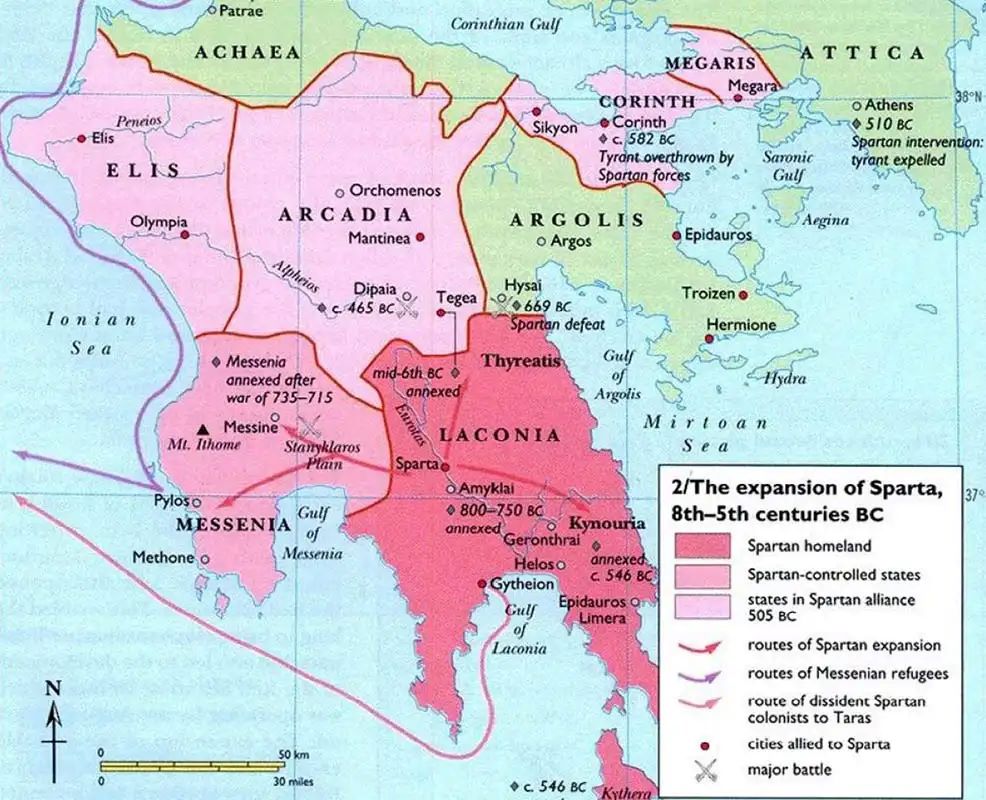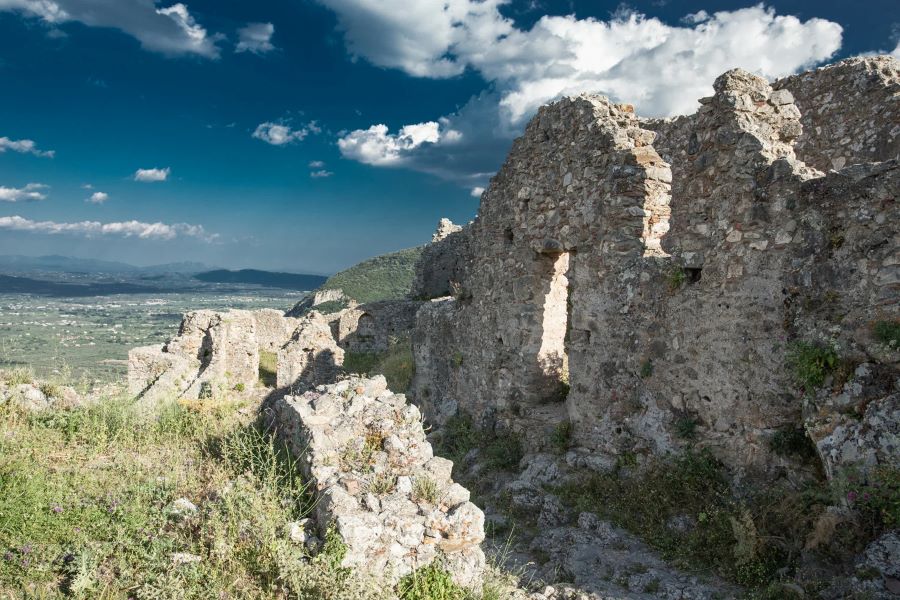Why was Laconia ruled by two kings at a time?
One of the mightiest military powers about 2,700 years ago was the state of Laconia, or Lacadaemon, which is better known as Sparta. Located on the Eurotas River, Sparta was one of the 1,000 city-states that dominated the ancient Greek world for centuries.
The secret to its influence and prowess lies in its unique governing system and discipline imposed on society. Originally, Sparta was a collection of four villages, which tended both to unite for the sake of security, and to maintain a degree of autonomy for the sake of freedom from tyranny.
While other city-states adopted either monarchy, for example Macedonia, or democracy such as Athens, or tyranny in Syracuse, Sparta was, in essence, an oligarchy that combined elements from all of above-mentioned.
More to read:
[animation] Ancient Greeks were first to build a railway
The major difference, however, was that the country was led by two kings at its help, who reigned for life concurrently and enjoyed limited powers under the watch of a 28-man-strong Gerousia, or Council of Elders. In certain criminal cases, the kings held judicial authority and tried citizens publicly.
The Gerousia, which consisted of aristocrats who served for life, was responsible for legislation, finances, construction, and so on. It was what we call today “government” and had more power than the monarchs.

Sparta at the height of its power.
Beneath the Council there was a larger base to reckon with - Apella or Assembly, made up of male Laconians over the age of 30. The Apella had the final say on major decisions, effectively serving as the democratic arm of this system.
A further layer of oversight was constituted by the Ephors, a group of five men elected annually by the Assembly. They acted as sort of executive officers and ombudsmen, keeping an eye on the kings’ actions.
This unusual structure ensured that the mechanisms of power remained in balance and a large part of society provided the necessary checks prevent the city-state from slipping into tyranny.
So why two kings anyway?
Sparta came to be ruled by two kings not out of strict necessity as some might think.
The roots of Sparta's dual kingship can be traced back to a blend of mythology and enduring historical traditions of the city-state.
Legend has it that the origin of the Spartan political system lies in the twin sons of Aristodemus, who was a descendant of Heracles (known as Hercules in Roman mythology).
Upon Aristodemus's death, his sons, Eurysthenes and Procles, were still infants. Instead of favoring one child over the other, the Spartan populace opted to honor both as kings, establishing two royal houses – the Agiads and the Eurypontids.
From that point onward, these two families took turns in wielding power, marking the start of Sparta's diarchal system. Their roles were primarily military and religious, with the kings being responsible with leading the Spartan forces into battle and officiating ceremonies to please Gods.
This co-king arrangement had practical uses; since Laconia often fought its neighbors and more distant enemies, it allowed for continuity of leadership in times of war - while one king led troops into battlefield, the other could remain at home to handle the routine tasks.
Then, the concept ensured that neither of the constitutionally-bound monarch could take unilateral decisions without his peer’s agreement, providing for stability and ultimately preventing the over-centralization of power.
The dual kingship system remained remarkably stable throughout Spartan history, with no major internal conflicts reaching us from ancient Greek records.

The ruins of Ancient Sparta.
Yet, it was not ideal and had plenty of drawbacks, such as inevitable rivaling and disagreement between the kings; disputes between the kings and the Council, which could delay or disrupt the decision-making process; or conflicts with the citizenry.
Another weakness is that this sort of governance confused allies and diluted the relationships, due to the lack of clarity who was the supreme authority to deal with in important matters. Foes widely exploited this system to divide the Spartans.
Laconia’s decline and abolition of dual kingship
The decline of Laconia / Sparta began in the 4th century B.C. following its defeat at the Battle of Leuctra in 371 BC by the Thebans.
This defeat marked the end of Sparta's military supremacy in Greece. Despite multiple attempts of political and social restructuring in the subsequent centuries, Sparta failed to reclaim its former eminence.
More to read:
Why did ancient Greeks compete naked at Olympic Games?
Its influence steadily waned, and by the Roman conquest of Greece in 146 BC, Sparta existed as a mere semblance of its past glory. The dual kingship system persisted into the Roman era but in a diminished state.
In the early 2nd century A.D., under the rule of Roman Emperor Hadrian, the dual kingship was effectively abolished. The Romans restructured the Peloponnese into the province of Achaea, relegating Sparta to the status of a Roman provincial city.
Sources: HistorySkills, Chicago University Journals, Wikipedia
***
NewsCafe is a small, independent outlet that cares about big issues. Our sources of income amount to ads and donations from readers. You can buy us a coffee via PayPal: office[at]rudeana.com.







